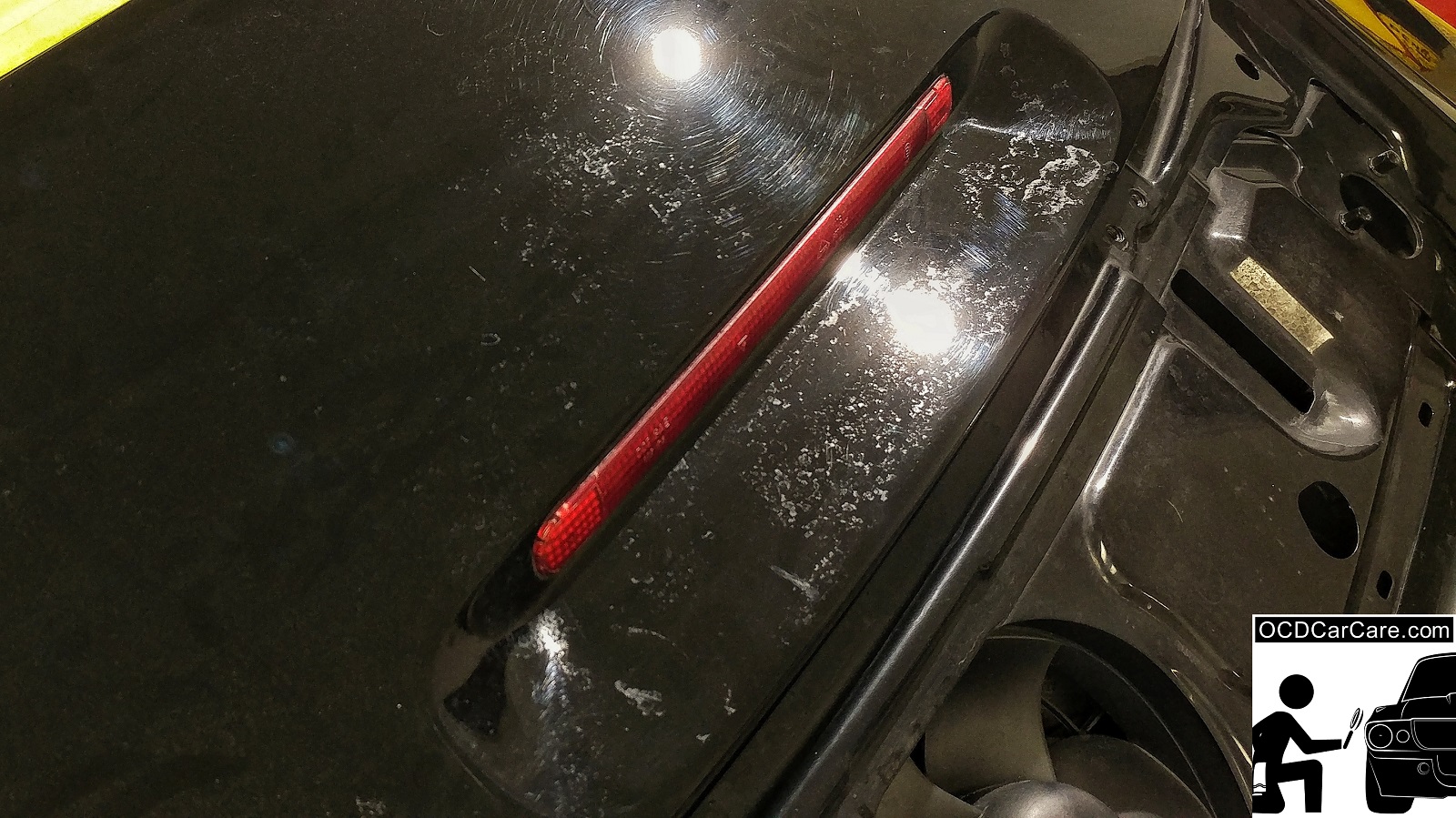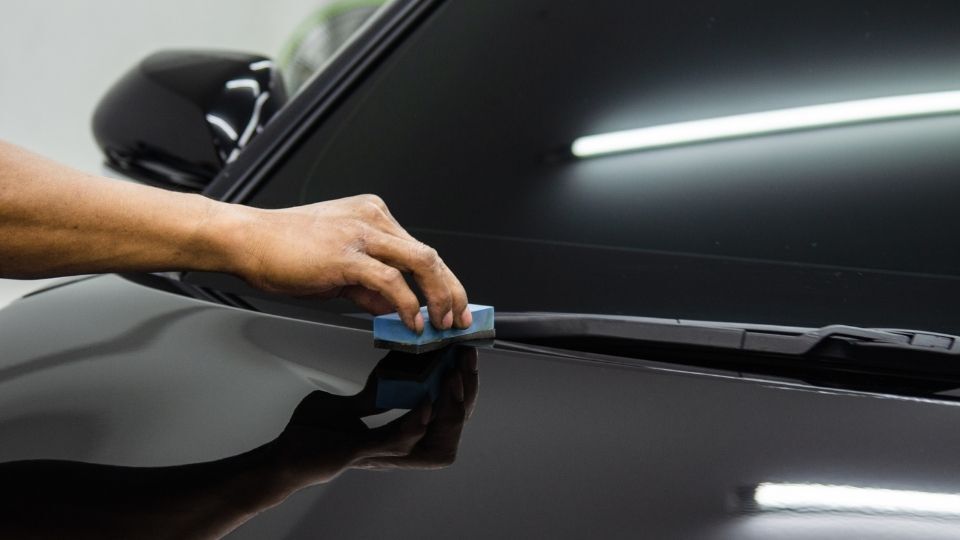Is Ceramic Coating Worth the Investment for Your Car’s Exterior?
Is Ceramic Coating Worth the Investment for Your Car’s Exterior?
Blog Article
Ceramic Covering vs. Typical Wax: Which Provides Better Long-Term Defense?
The discussion between ceramic finishings and traditional wax for vehicle protection has gathered substantial interest amongst automotive lovers and experts alike. Ceramic coverings flaunt premium durability and resistance to environmental elements, yet the intricacy of their application raises questions about ease of access and practicality.
Introduction of Ceramic Layer
Ceramic layer has gotten significant popularity amongst vehicle fanatics and detailers alike because of its sophisticated protective qualities. This ingenious technology is designed to produce a resilient, hydrophobic shield over a vehicle's paint surface area, dramatically improving its resistance to ecological pollutants such as dust, UV rays, and chemical stains. Unlike traditional wax, which gives a short-lived layer of security, ceramic layers bond at a molecular level with the paint, providing durable sturdiness-- usually expanding beyond two years with appropriate maintenance.
The application procedure includes meticulous preparation of the car's surface area, including cleaning and polishing to ensure optimum bond. Once applied, the covering cures to create a robust layer that not just adds depth and gloss to the paint but additionally simplifies upkeep. With its hydrophobic residential or commercial properties, ceramic coating allows water and dirt to move off even more easily, lowering the frequency of cleans and minimizing the risk of swirl marks.
Additionally, ceramic finishings are available in various solutions, enabling individuals to choose items tailored to their particular demands and preferences. In general, ceramic coating stands for a significant development in paint security modern technology, providing exceptional efficiency contrasted to traditional choices.
Introduction of Traditional Wax
Typically considered as a staple in automotive care, wax functions as a preferred selection for those looking for an uncomplicated technique to improve and secure their car's paint - ceramic coating. Automotive wax typically comprises all-natural ingredients, such as carnauba, or synthetic compounds, developed to produce a safety layer externally of the paint. This layer not only enhances the car's gloss and radiate but also offers an obstacle against environmental contaminants
The application of wax is usually straightforward, making it accessible for both specialists and DIY fanatics. It can be used by hand or machine, enabling for flexibility in the outlining procedure. As soon as applied, wax needs a healing duration, after which it solidifies to create a safety covering. Wax is likewise recognized for its capacity to drive away water, promoting a beading impact that assists in the avoidance of water spots and corrosion.
Nonetheless, while wax works for boosting the aesthetic charm of a vehicle, it is very important to keep in mind that the protection it provides might demand more frequent reapplication compared to different items, such as ceramic finishes. Overall, typical wax remains a favored alternative for those prioritizing simplicity of usage and prompt visual renovation.
Sturdiness and Long Life Contrast
While both ceramic finishes and conventional wax offer safety advantages for auto paint, their toughness and long life vary significantly. Traditional wax, usually made from natural carnauba or synthetic polymers, normally offers a protective layer that lasts roughly 3 to 6 months. This reasonably short lifespan necessitates regular reapplication to maintain optimum defense.
On the other hand, ceramic coatings are engineered from advanced nanotechnology, developing a covalent bond with the paint surface. This leads to a durable, hydrophobic layer that can sustain for 2 to 5 years, depending upon the product and ecological problems. The superior longevity of ceramic coverings is connected to their chemical framework, which offers improved resistance to scrapes, UV rays, and oxidation.

Protection Against Environmental Elements
Safeguarding a vehicle's paint from environmental aspects is vital for keeping its appearance and value gradually. Vehicles are constantly revealed to a variety of elements, consisting of UV rays, bird droppings, tree sap, acid rainfall, and road crud, all of which can compromise the honesty of the paintwork.
Ceramic finishes supply a robust defense versus these ecological aggressors. Unlike traditional wax, which can weaken swiftly under UV exposure, ceramic layers create a sturdy, hydrophobic layer that stands up to the harmful results of sunlight and ecological contaminants. This advanced innovation produces a chemical bond with the vehicle's surface, offering premium security that lasts for years, even in harsh conditions.
Standard wax, while less complicated to use, generally needs regular reapplication and uses minimal resistance to impurities and UV rays. Gradually, it can damage down, leaving the paint vulnerable to scratches and oxidation. On the other hand, ceramic layers keep their safety top qualities much longer, significantly reducing the risk of paint damage and making sure that the lorry retains its visual appeal. As a result, ceramic coverings are progressively identified as the superior option for lasting protection versus environmental variables.
Application and Maintenance Differences
The approaches of application and succeeding upkeep for ceramic finishes and conventional wax differ dramatically, affecting the overall customer use this link experience and efficiency of each item. Ceramic coatings need a more detailed application process, generally entailing surface preparation that includes washing, sanitizing, and polishing the lorry. When the surface area prepares, the ceramic finish is applied in a controlled setting, frequently needing specialist competence to make certain appropriate healing and bonding to the paint.

While both items enhance vehicle look, the longer-lasting defense provided by ceramic coverings may warrant their first investment, despite the even more requiring application process. Alternatively, standard wax continues to be a popular option for those seeking a simpler, albeit short-term, option.

Conclusion
Finally, ceramic try these out finishes show substantial benefits over typical wax in terms of toughness and environmental protection. With a life expectancy prolonging two to five years and exceptional resistance to UV rays, dirt, and chemical spots, ceramic finishings use an extra reliable remedy for lasting lorry upkeep. The application process might call for professional experience, the resulting expense financial savings and lowered regularity of reapplication highlight the value of ceramic coverings for those seeking optimal lorry defense.
The debate in between ceramic finishings and traditional wax for automobile defense has garnered substantial focus among automotive you can find out more enthusiasts and professionals alike. Unlike typical wax, which provides a temporary layer of defense, ceramic coatings bond at a molecular degree with the paint, using lasting resilience-- often expanding past 2 years with proper upkeep.
While both ceramic coatings and conventional wax deal safety advantages for automobile paint, their longevity and durability vary dramatically. For car lovers looking for long-term security, ceramic layers provide an engaging advantage over typical wax products.
In final thought, ceramic coatings demonstrate significant advantages over traditional wax in terms of toughness and environmental security.
Report this page